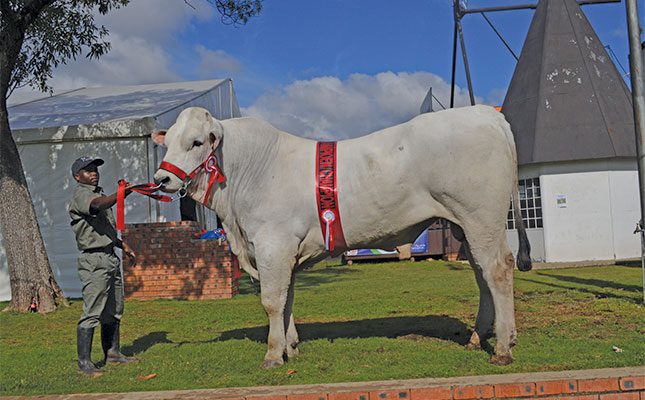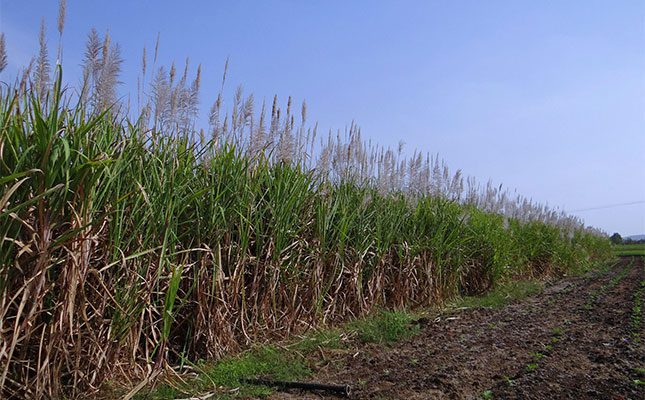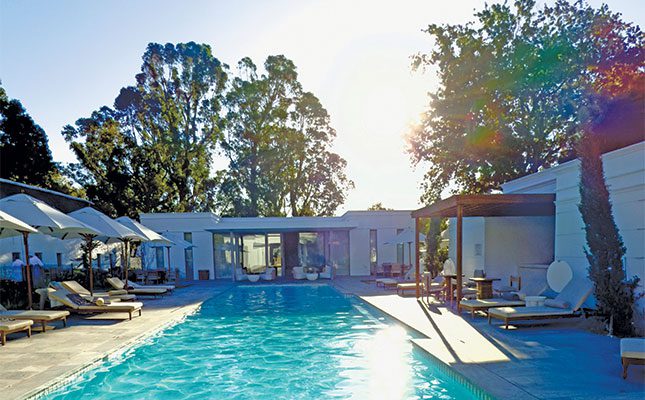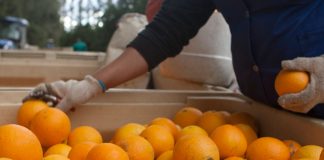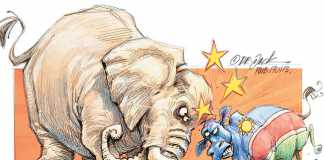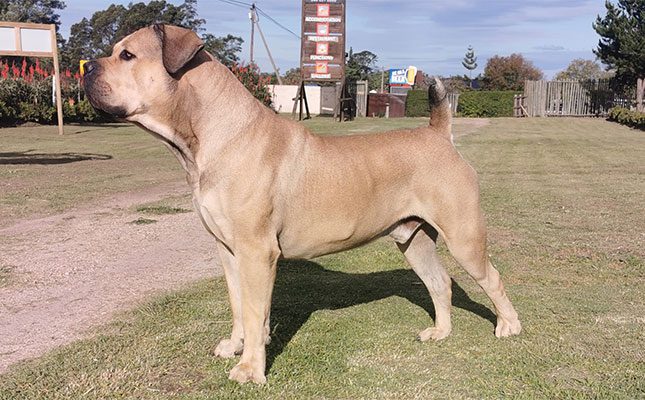
Photo: Wikimedia Commons
It is believed that the breed evolved from the variety of dogs these early pioneers brought with them. Faced with the challenging conditions of the rugged land, harsh climate, and constant threats from predators, over time only the toughest dogs survived.
Interbreeding, particularly with locally adapted Africanis, also contributed to the development of a resilient breed, valued as a guard and working dog that could track and hold down wounded game.
Some sources trace the Boerboel’s ancestry more specifically to Jan van Riebeeck, who arrived with his Bullenbijter, a now-extinct breed with origins in Albania and Syria. The Boerboel is said to have been bred from this genetic material and that of the Africanis. Historical accounts also mention mastiff-like dogs accompanying the Boers during the Great Trek.
It took nearly four centuries, however, for the formal breeding and documentation of Boerboels to begin. In the early 1980s, a group of farmers set out to preserve the breed by identifying and selecting the best specimens from across South Africa to establish a foundation stock.
Their efforts led to the formalisation of the breed in 1983 by the South African Boerboel Breeders Association, with the first official breed standard written in 1987.
The South African Boerboel Breeders’ Society (SABBS) was founded in 2012 and is recognised as the official custodian of the breed. The Boerboel has also been classified as a landrace breed under the provisions of the Animal Improvement Act (No. 62 of 1998).
“A landrace breed refers to a dog that developed naturally over centuries and adapted to the environment and needs of a specific region. And, in this case, the Boerboel is proudly South African,” explains SABBS Chairperson Lititia Kruger, who has been actively involved with the society for a decade and has served on its board for six years.
Breed characteristics
Boerboels are large, strong, and muscular with solid, stocky builds. While they’re most commonly seen in various shades of brown, red and brindle are also recognised coat colours. In terms of temperament, they are calm, confident, and stable, and are known for being fearless and highly protective of their owner or families.
“Today, most Boerboels live in homes and are part of the family. While they are affectionate and gentle, they still retain their natural guarding instincts and will protect your home when needed. They also provide protection to thousands of farmers,” says Kruger.
Unfortunately, the breed is sometimes misjudged. “A common misconception is that Boerboels are inherently aggressive,” she says. “Due to their size and guarding instincts, they are often misunderstood. In truth, a well-bred and properly socialised Boerboel is no more dangerous than any other breed.
All dogs used in breeding must pass a formal SABBS appraisal, where temperament is assessed alongside physical conformation. Senior appraisers – highly trained and experienced – evaluate whether a dog is confident, calm, or unsuitable due to aggression or fearfulness.
“Another common misunderstanding is that any large, mastiff-type dog is a Boerboel. However, only dogs registered with the SABBS are officially recognised as Boerboels. Others may resemble Boerboels but are classified as Boerboel-type dogs. SABBS-registered Boerboels are bred responsibly, raised with care, and are accompanied by certified documentation from our partner, SA Stud Book, showing their full pedigree over several generations,” adds Kruger.
She says many misconceptions come about due to reports in the media. “Any large dog involved in an incident is often labelled a Boerboel, regardless of whether it is registered or even part of the breed. This misrepresentation has contributed to public confusion.
“Additionally, when people encounter a Boerboel with no socialisation or training – often due to irresponsible breeding or ownership – it may reinforce a negative stereotype. This is why we strongly advocate for responsible breeding, registration, and owner education,” she explains.
The SABBS drives various awareness campaigns, such as at national agricultural events like Nampo, where it showcases the true temperament and versatility of the breed.
“Our goal is to educate, protect, and promote the South African Boerboel as a balanced and intelligent family companion and working dog,” says Kruger.
The society is also focused on educating from an early age. “The SABBS created a colouring book that explains the story of the landrace Boerboel in a way that children can easily understand, helping to further promote and celebrate the breed,” she adds.
Guidance for potential owners
“Owning a Boerboel, like any large breed dog, is a big responsibility, and owners must make the necessary commitment to raising a well-adjusted and balanced dog. This can be more demanding and involve more time, effort, and training than a small or medium-sized dog,” SABBS states on its website.
Kruger expands on this: “Boerboels are highly intelligent and trainable. They thrive on structure, routine, and early socialisation, such as accompanying their owners on school runs or vet visits.
“Secondly, they are natural guardians and loyal companions. However, their size and power require responsible handling, proper training, and a stable home environment.
“Lastly, if you are looking to purchase an SABBS-registered Boerboel, please contact our office, which will provide you with a list of breeders in good standing.”
She explains that breeders have different goals; some focus on preserving specific lines, while others focus on producing dogs for guardianship or show. The SABBS has over 800 reputable breeders on its list.
“At the end of the day, we encourage potential owners to visit several breeders, ask questions, and choose a breeder who shares their values and goals. Remember, the Boerboel is more than just a dog: it’s a piece of South African heritage,” says Kruger.
For more information phone the South African Boerboel Breeders’ Society on 051 410 0950, or email [email protected].



